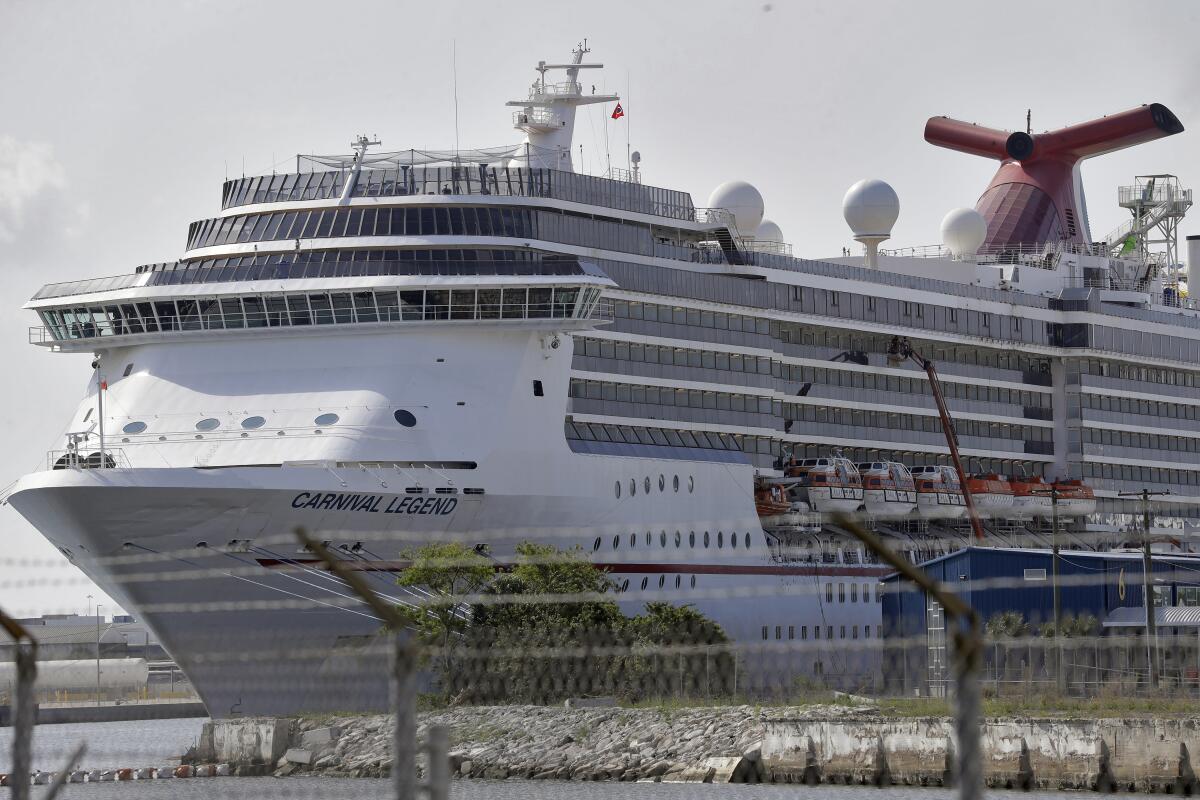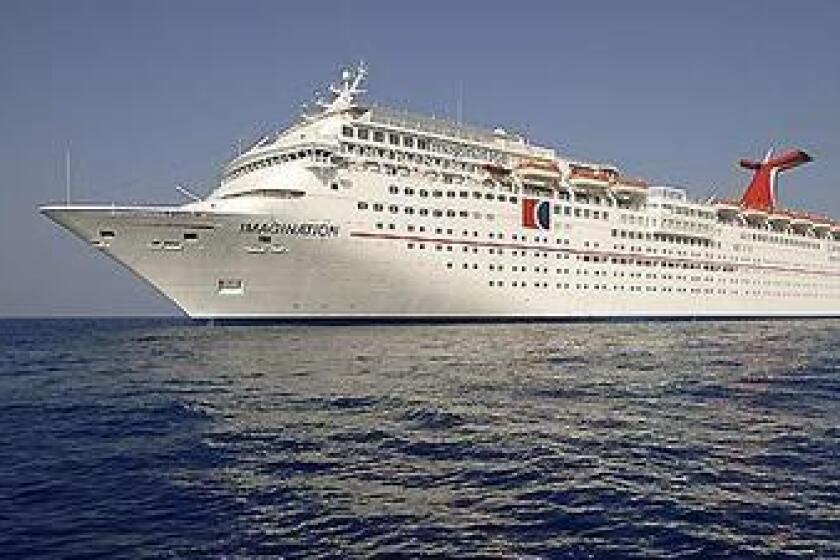Cruise ships can plan a return to U.S. waters, CDC decides

The U.S. Centers for Disease Control and Prevention announced Friday that it would lift a ban on cruises in U.S. waters, even as government scientists warned that ships remain vulnerable to deadly COVID-19 outbreaks.
The agency provided a list of detailed requirements that cruise lines must meet to resume U.S. operations — meaning that ships could return to U.S. ports in the next few months.
“This framework provides a pathway to resume safe and responsible sailing,” CDC Director Robert Redfield said in the statement.
Yet with its statement Friday, the CDC said recent outbreaks show cruise travel “facilitates and amplifies” transmission of COVID-19 even at reduced passenger capacities and would pose a risk of fueling spread without proper oversight.
The decision, which comes as coronavirus cases are surging in several parts of the U.S., ends a ban that had been in place since March 14. The CDC last month had recommended extending the ban to February, but Vice President Mike Pence, who chairs the White House coronavirus task force, overruled that proposal, according to two people familiar with the matter.
Cruise companies say pent-up demand, once the U.S. no-sail order is lifted, will lead to higher ticket costs.
Getting back to sea may not be simple. The initial phase will require cruise operators to “demonstrate adherence to testing, quarantine and isolation, and social distancing requirements to protect crew members while they build the laboratory capacity needed to test crew and future passengers,” the agency said.
Shares of Carnival Corp., the largest operator, climbed 5.6% on Friday. Royal Caribbean Group stock rose 4.8%, and Norwegian Cruise Line Holdings Ltd. rose 5.5%.
The seven-month shutdown has been catastrophic for an industry that was booming before the pandemic struck. It has cost thousands of jobs and generated billions of dollars in losses. Since the end of January, the three biggest cruise line companies — Carnival, Royal Caribbean and Norwegian — have lost tens of billions of dollars in combined market capitalization.
Since the order was imposed in March, the CDC has faced intense pressure by the major cruise lines and the White House to end it.
The airline industry is promoting new studies that suggest the risk of contracting COVID-19 while flying is low. Let’s take a closer look at the assertions.
The cruise industry this year has doubled the number of lobbyists it employs to target the White House, Congress and numerous federal agencies, disclosures show. Major cruise lines also have presented detailed plans to make ships safer from COVID-19, with recommendations that include sailing initially with fewer passengers, eliminating food buffets and requiring face masks and some virus testing onboard.
The CDC can impose no-sail orders due to public health threats under federal law, but Pence and the task force view the CDC as having an advisory role, along with other federal agencies such as the Department of Homeland Security, according to a senior administration official who asked not to be named to discuss the task force’s approach.
That view has led the White House to clash with CDC cruise ship experts and overrule them in some cases. Pence’s decision last month to override the recommendation to extend the ban to February was first reported by Axios. The White House task force intervened similarly last spring to shorten an extension proposed by the CDC, according to three people familiar with the matter.
It’s unclear when cruise lines will return to filling ships with passengers again at U.S. ports, despite the end of the no-sail order. Cruise lines had already voluntarily halted cruises until Saturday and canceled many cruises that had been planned for the rest of this year. Carnival recently said that “November 2020 operations will not be feasible” but that there’s solid demand for bookings next year. “The company believes this demonstrates the long-term potential demand for cruising,” Carnival said in an Oct. 12 statement.
The CDC has made clear that cruises are a long way from being safe from the coronavirus. As of Sept. 28, 124 cruise ships, or 82% of the U.S. fleet, had suffered COVID-19 outbreaks, killing at least 41 people and sickening 3,689, the CDC said last month. And recent cruises in other countries suffered outbreaks despite implementing the same measures U.S. cruise lines are proposing.
Paul Golding, an analyst with Macquarie Group, said cruise lines face hard decisions irrespective of the CDC lifting the no-sail order. Rising coronavirus cases will weigh on consumer sentiment, he said. The CDC decision, he said, is “not likely to be a watershed moment for cruise resumption.”
Smith and Levin write for Bloomberg.
More to Read
Inside the business of entertainment
The Wide Shot brings you news, analysis and insights on everything from streaming wars to production — and what it all means for the future.
You may occasionally receive promotional content from the Los Angeles Times.











